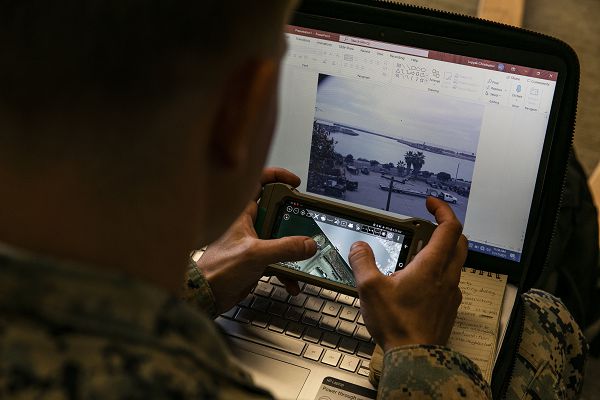
Camp Pendleton, California. (November 12, 2023): For the Marines, nothing is more important than knowing one’s position, or situational awareness, in a combat zone. In this photo by Sergeant Hailey D. Clay, Marine Corps Corporal Taylor Jenkins, a combat engineer with Littoral Engineer Reconnaissance Team, 9th Engineer Support Battalion, 3d Marine Logistics Group, uses the Android Tactical Assault System (ATAK) to input reconnaissance findings. The ATAK is a tool Marines use to report geospatial information among many other uses that are vital in combat.
Developed by scientists and engineers at the Air Force Research Laboratory, the ATAK gives warfighters up-to-the-second situational awareness including visual displays and other analytics. It enables users to navigate using GPS and geospatial map data overlayed with real-time ongoing events.
These tactical feeds allow precision targeting, detail surrounding land information, GPS navigation, and data sharing. Operators can view the location of other Marines which is a great leap in technology compared to hand-held radio transmissions. The ATAK can be downloaded to a phone, tablet, or handheld device and data can be projected onto a large screen in a conference room. For Marines in the field, the ATAK can be attached to an operator’s forearm, thigh, or chest for hands-free use.
The ATAK is currently in use by over 40,000 Department of Defense and Homeland Security personnel and over 32,000 nonfederal users. The system comes in a variety of modes including Combat Advising, Law Enforcement, Border Security, Disaster Response, and Precision Mapping and Geotagging.
The ATAK system is used in public safety operations including the Super Bowl.


